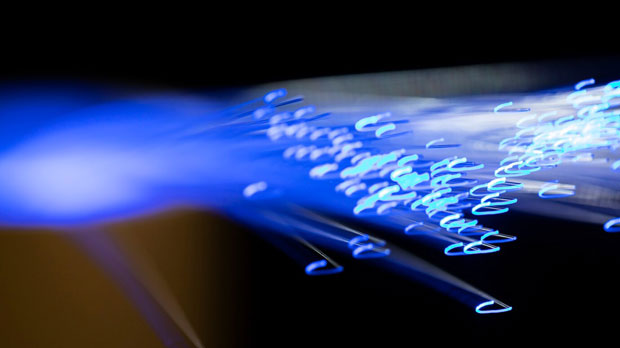In today's digital landscape, HTTP and sock s5 proxies have become essential tools for privacy, security, and internet management. However, with the rapid pace of technological advancements and the ongoing development of new protocols, many are questioning whether these legacy proxy types will eventually be superseded by more advanced solutions. While HTTP and SOCKS5 continue to serve their purposes effectively, emerging protocols promise enhanced performance, security, and greater flexibility. This article explores the future of HTTP and SOCKS5 proxies and whether they will be replaced by these newer, more sophisticated technologies. Understanding HTTP and SOCKS5 ProxiesBefore delving into the potential for replacement, it is important to first understand what HTTP and SOCKS5 proxies are and how they function. These protocols serve as intermediaries between a user's device and the internet, allowing them to route traffic through different servers. By doing so, they offer several benefits, such as masking the user's IP address, bypassing geo-restrictions, and enhancing security.HTTP Proxy: The HTTP proxy operates at the application layer and primarily handles HTTP and HTTPS traffic. It intercepts requests made by the client and forwards them to the destination server. The HTTP proxy is widely used for tasks like content filtering, security, and privacy enhancement. However, it is limited by its inability to handle non-HTTP traffic, such as FTP or email. socks5 proxy: SOCKS5, on the other hand, is a more versatile proxy that works at a lower level (the transport layer) and supports a wider range of protocols, including HTTP, FTP, and even peer-to-peer traffic. SOCKS5 is typically favored for its flexibility and ability to handle various types of internet traffic. It also offers enhanced security features, such as authentication and data integrity checks.Despite their strengths, both HTTP and SOCKS5 proxies have limitations in terms of speed, encryption, and overall performance, which has led to the development of newer technologies that could potentially replace them in the future.Limitations of HTTP and SOCKS5 ProxiesAlthough HTTP and SOCKS5 proxies have been around for many years and have their advantages, they are not without their drawbacks. One of the primary issues with both protocols is their reliance on encryption and tunneling methods that can lead to reduced speeds and inefficiencies, especially when dealing with large amounts of data.Speed and Latency: HTTP proxies are known to introduce latency due to their reliance on the HTTP protocol. They can slow down browsing speeds and affect the performance of time-sensitive applications, such as video streaming or online gaming. SOCKS5 proxies are more flexible in terms of the protocols they support, but they still rely on similar tunneling techniques that can cause slowdowns.Security Concerns: While SOCKS5 proxies offer better security than HTTP proxies, they are not immune to risks. SOCKS5 does not provide encryption by default, which means that users need to pair it with other technologies (such as VPNs or HTTPS) to ensure complete data protection. Additionally, the lack of strict security standards means that SOCKS5 can be vulnerable to attacks if not properly configured.Compatibility: HTTP proxies are limited in their ability to handle traffic that does not use the HTTP protocol. This makes them unsuitable for activities like file sharing or VOIP calls. SOCKS5, although more flexible, still requires specific configuration and can encounter compatibility issues with certain types of traffic or applications.Emerging Protocols: Are They the Future?With the growing demand for faster, more secure, and more versatile internet connections, new protocols are being developed that may eventually replace HTTP and SOCKS5 proxies. Some of these protocols offer significant improvements in areas such as speed, security, and ease of use.WireGuard VPN: One of the most promising alternatives to traditional proxies is WireGuard, a modern VPN protocol designed for simplicity and speed. WireGuard provides stronger encryption than SOCKS5 and is more efficient than older VPN protocols like OpenVPN. Its streamlined codebase reduces overhead, resulting in faster connection speeds and lower latency. Additionally, WireGuard’s easy-to-use configuration and high security make it an attractive option for users who require reliable privacy without the complexity of setting up traditional proxies.QUIC Protocol: Developed by Google, QUIC is a transport layer protocol designed to improve web performance by reducing connection establishment times and improving data transfer speeds. QUIC combines the advantages of HTTP/2 and TCP, providing faster and more reliable connections, especially in mobile networks. It also has built-in encryption, which can eliminate the need for additional security layers. As QUIC is increasingly adopted by web browsers and services, it could eventually reduce the reliance on HTTP proxies.HTTP/3: Building on the QUIC protocol, HTTP/3 is the next evolution of the HTTP standard. HTTP/3 leverages QUIC’s speed and security features, offering faster page load times, reduced latency, and improved resilience to network congestion. This makes HTTP/3 a viable option for replacing traditional HTTP proxies in the future, especially for high-demand services.The Future of Proxies in a Changing LandscapeDespite the advancements in new protocols, proxies are likely to remain a crucial part of the internet infrastructure for the foreseeable future. However, the role they play may evolve as more advanced technologies emerge.Integration with New Protocols: While HTTP and SOCKS5 proxies may not disappear entirely, their functionality could be integrated with newer protocols like WireGuard or HTTP/3. This would enable users to benefit from the strengths of these advanced protocols while maintaining the privacy and security features that proxies provide. For example, a modern proxy service could use WireGuard’s encryption to ensure a secure connection while still acting as an intermediary between the user and the destination server.Specialized Use Cases: It is also likely that HTTP and SOCKS5 proxies will continue to be used for specific tasks, such as bypassing geo-restrictions, web scraping, or managing large-scale internet traffic. These proxies are lightweight and simple, making them useful for scenarios where high-level security or ultra-fast performance is not a top priority.The future of HTTP and SOCKS5 proxies is closely tied to the evolution of internet protocols. While newer technologies like WireGuard, QUIC, and HTTP/3 offer significant advantages in terms of speed, security, and efficiency, it is unlikely that proxies will be entirely replaced in the near future. Instead, they may be integrated with newer protocols, serving specialized purposes or maintaining relevance in specific use cases. As the digital world continues to change, the need for flexible, secure, and efficient internet access will keep proxies in play, albeit in a more advanced and integrated form.
Apr 22, 2025
![arrow]()




























































